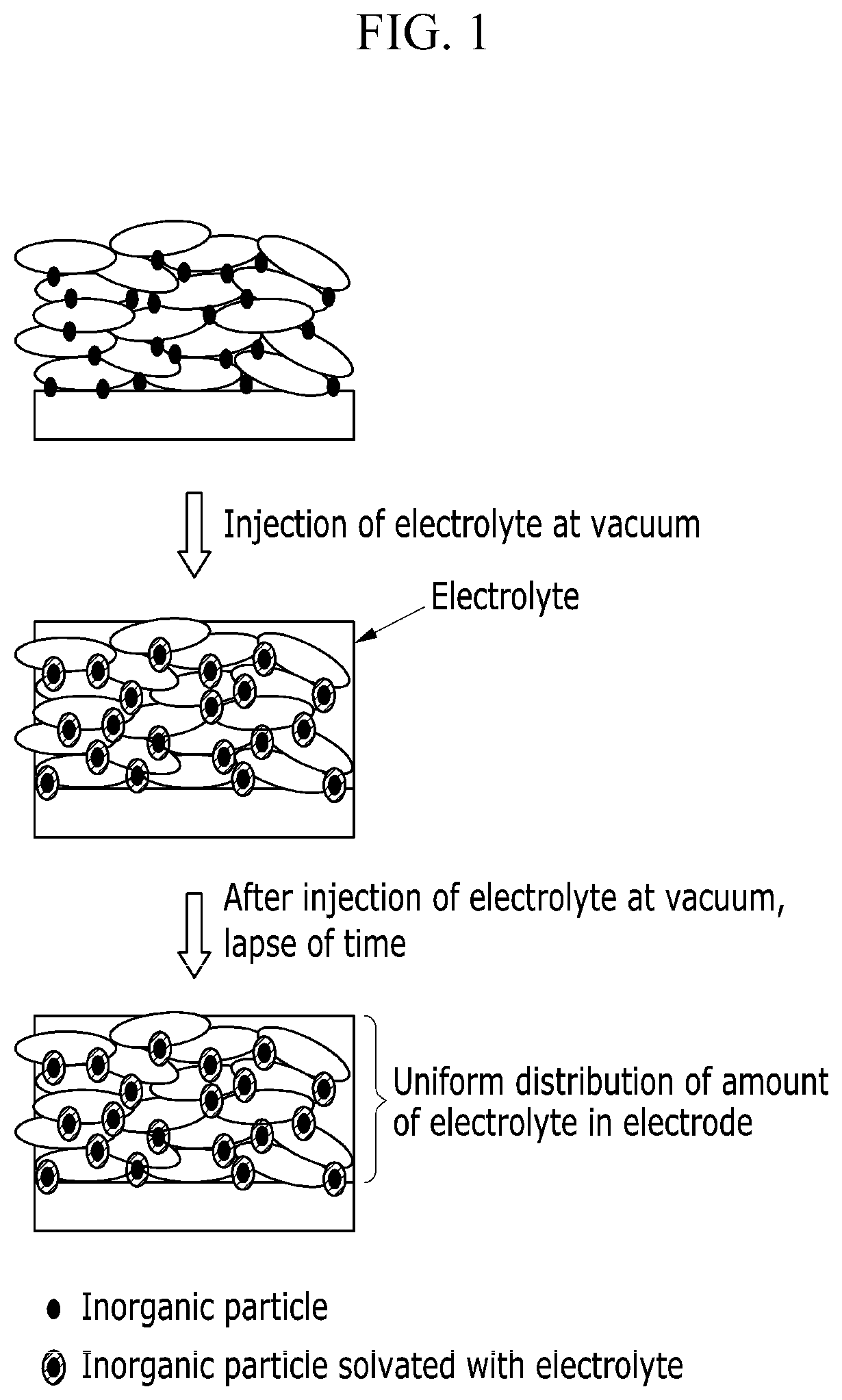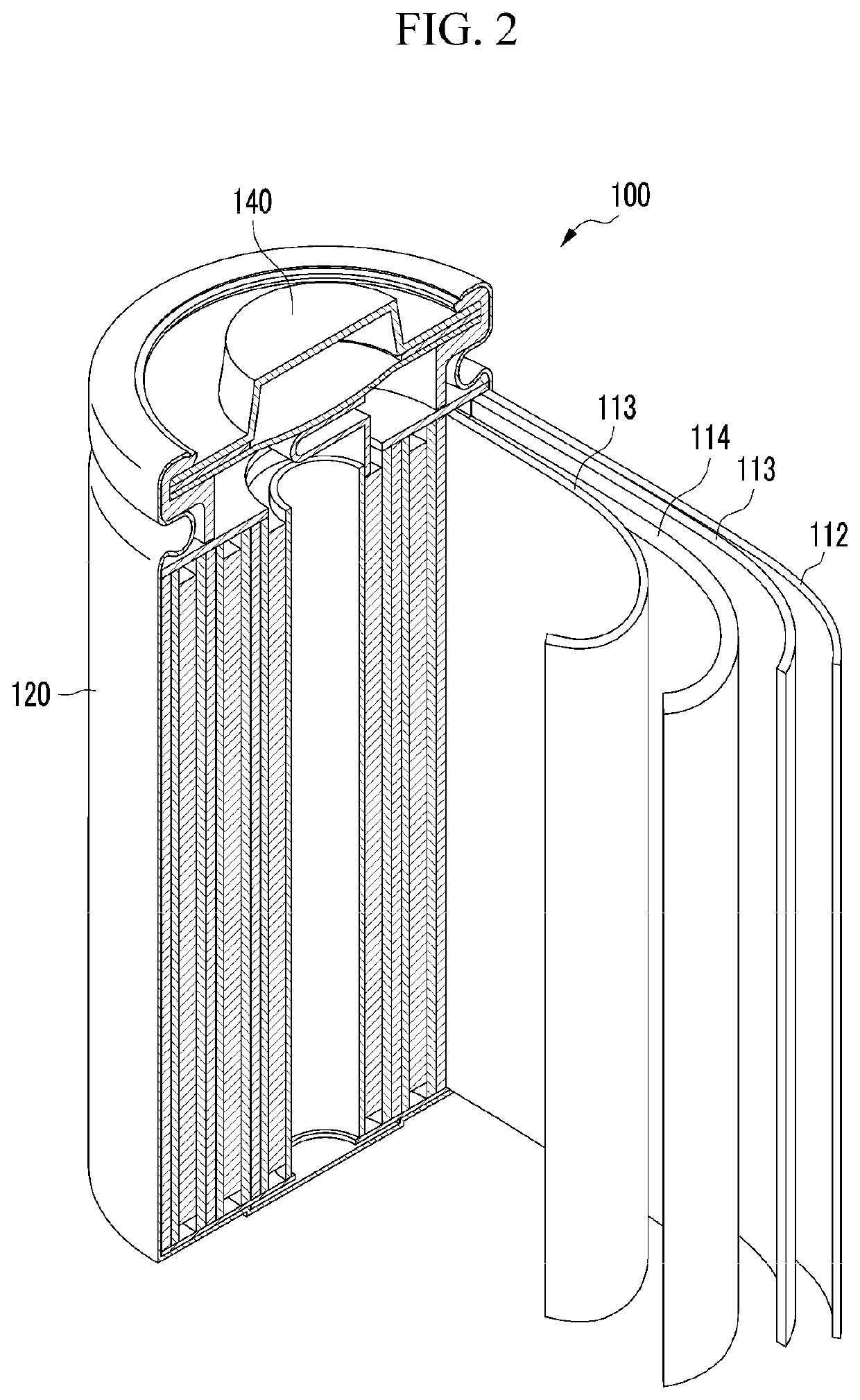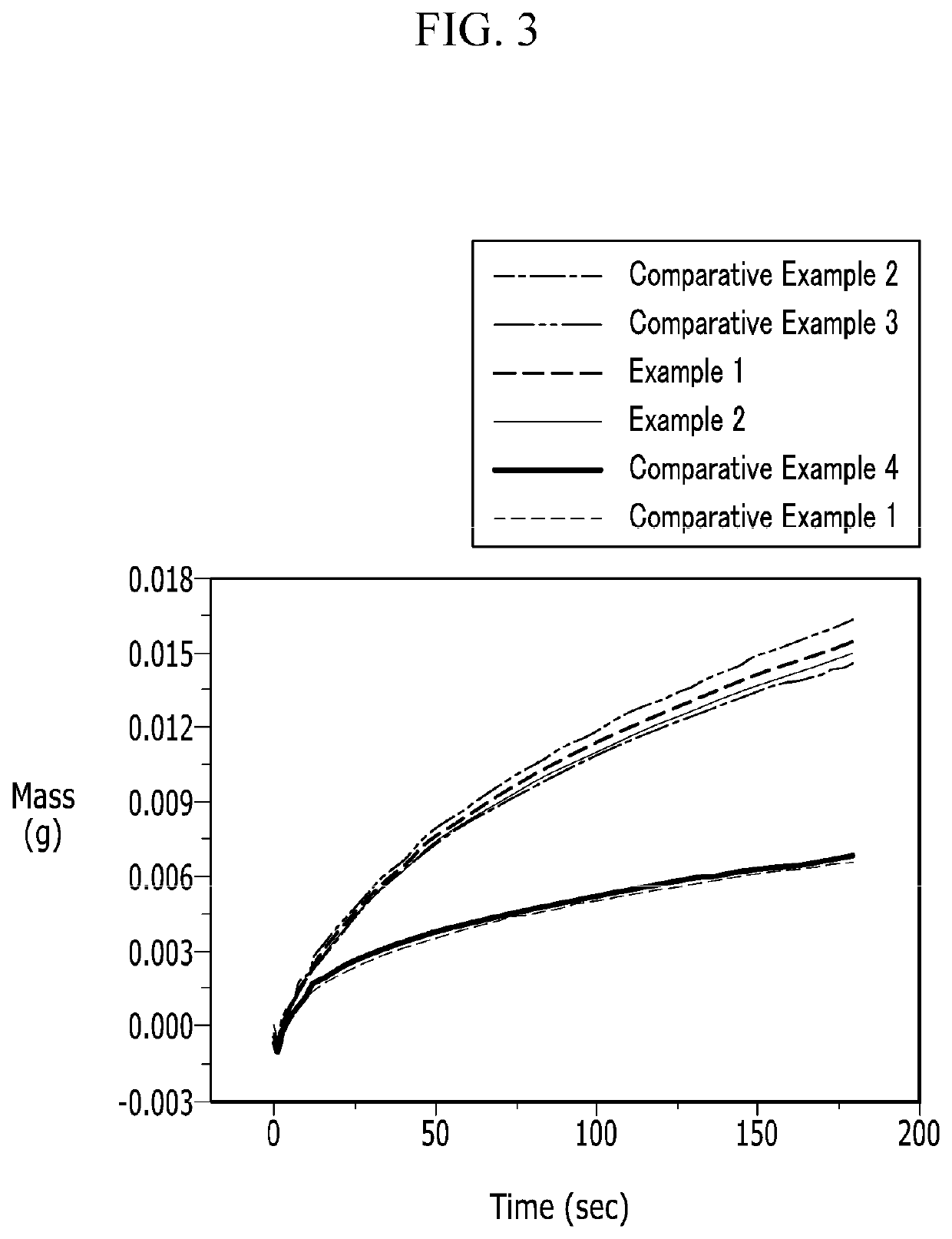Negative electrode for rechargeable lithium battery and rechargeable lithium battery including same
- Summary
- Abstract
- Description
- Claims
- Application Information
AI Technical Summary
Benefits of technology
Problems solved by technology
Method used
Image
Examples
example 1
[0083]A negative active material was prepared by mixing graphite and 0.5 parts by weight of AlO(OH) having 0.4 μm of a particle diameter based on 100 parts by weight of the graphite and dry-coating inorganic particles on the surface of the graphite to form an island shape at a rotation speed of 3000 rpm for 15 minutes with a Nobilta™ equipment.
[0084]97 wt % of the negative active material, 1 wt % of carboxylmethyl cellulose (CMC), 1 wt % of a styrene-butadiene rubber (SBR) and 1 wt % of carbon black were dispersed into water, preparing slurry. The slurry was coated on a Cu foil current collector, dried and compressed, manufacturing a negative electrode having 1.75 g / cc of active mass density.
example 2
[0085]A negative electrode was manufactured according to the same method as Example 1 except for using 96.05 wt % of a negative active material and 1.95 wt % of carbon black during the manufacture of the negative Electrode.
reference example 1
[0086]A negative electrode was manufactured according to the same method as Example 1 except for using Al2O3 having 2 μm of a particle diameter instead of the AlO(OH) in Example 1.
PUM
 Login to View More
Login to View More Abstract
Description
Claims
Application Information
 Login to View More
Login to View More - R&D
- Intellectual Property
- Life Sciences
- Materials
- Tech Scout
- Unparalleled Data Quality
- Higher Quality Content
- 60% Fewer Hallucinations
Browse by: Latest US Patents, China's latest patents, Technical Efficacy Thesaurus, Application Domain, Technology Topic, Popular Technical Reports.
© 2025 PatSnap. All rights reserved.Legal|Privacy policy|Modern Slavery Act Transparency Statement|Sitemap|About US| Contact US: help@patsnap.com



